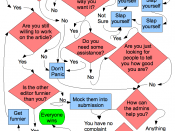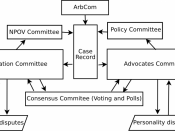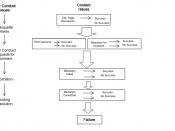Dispute Summary � PAGE �3�
Dispute Summary
Schevella Nicholes
BUS 415 - Business Law
Group ID: AGBM0407C
University of Phoenix
Instructor: Richard Pacheco
February 11, 2008�
Dispute Summary
Disputes in the workplace do not have to be resolved in court. Disputes can be resolved by using alternative dispute resolution, or ADR. Methods of ADR have helped people to reach agreements that are beneficial to all people involved. "The most common form of ADR is arbitration. Other forms of ADR are mediation, conciliation, minitrial, fact-finding, and a judicial referee" (Cheeseman, 2004, p.41). "In arbitration, the parties choose an impartial third party, called the arbitrator, to hear and decide the dispute" (Cheeseman, 2004, p.41). The arbitrator hears the case, just as if the parties were in court, and the decision made by the arbitrator is final. If the parties decide beforehand that the arbitrator's decision is not final, the case can be appealed to the courts.
Mediation and conciliation are similar methods of dispute resolution. In mediation, a neutral third party hears the dispute and tries to convince the people involved come to an agreement, whereas a conciliator is a third party interested in the dispute and acts as a mediator to get the parties to come to an agreement. "A minitrial is a short proceeding where lawyers for the parties involved have the facts of the case heard by representatives who can settle the dispute. After the cases are presented, the parties attempt to negotiate a settlement" (Cheeseman, 2004, p.43). "Fact-finding is a process whereby the parties hire a neutral person to investigate the dispute. The fact-finder reports his or her findings to the adversaries and may recommend a basis for settlement" (Cheeseman, 2004, p.43). "A judicial referee may be appointed by the court to conduct a private trial and...


